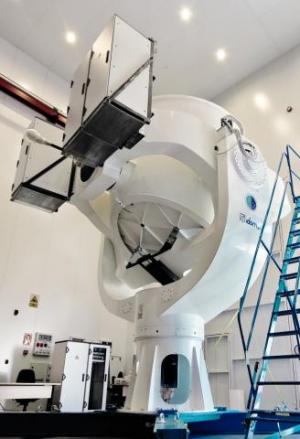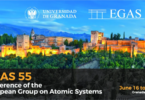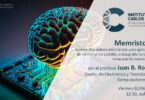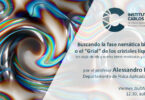Conferencia: «The QUIJOTE experiment: first results and future plans»
, José Alberto Rubiño , Instituto de Astrofísica de Canarias Lugar: Salón de Actos del Edificio Mecenas hora: 12:00 horas, 20 de mayo de 2015 .
The QUIJOTE (Q-U-I JOint TEnerife) experiment is a new polarimeter to characterize the polarization of the CMB in the frequency range 10-40 GHz. Its main goal is to characterize the primordial B-mode anisotropy of the CMB down to a sensitivity in the tensor-to-scalar ratio of r~0.05, and to measure the level of the polarization of low-frequency Galactic foregrounds (the synchrotron and the anomalous dust emissions).
The project consists of two telescopes and three instruments which will explore a large sky area (20000 sq deg) from the Teide Observatory (Tenerife) to provide Q and U maps of high sensitivity. The first telescope and the Multi-Frequency Instrument (MFI) are operative since November 2012 in the frequency range 10-20 GHz. The second telescope is also installed since July 2014, and the two additional instruments, at 30 and 40 GHz respectively, are currently under construction. The commissioning phase of the 30GHz instrument will start in few months. These two instruments will provide Q and U maps with a sensitivity better than 1 muK/beam.
In this talk I will discuss the status of this project, its future goals, and will present the first maps obtained with the MFI. In particular, I will describe the performance of the instrument, and I will present the first maps of the half-sky survey with the MFI (20,000 deg2). I will also discuss the polarization fraction of the synchrotron emission in SNRs (3C58, W63, etc.), the diffuse polarised emission maps towards the Galactic Center, and the derived limits on the polarization fraction of the anomalous microwave emission in the Perseus molecular complex.








